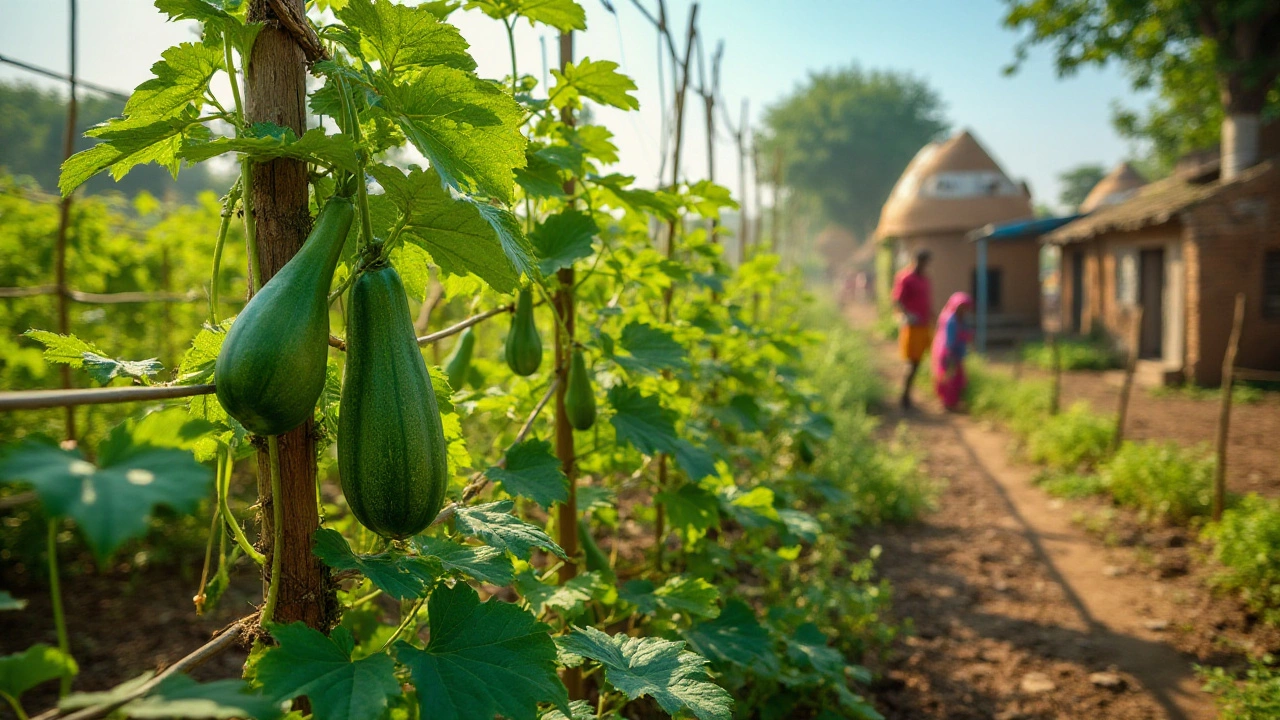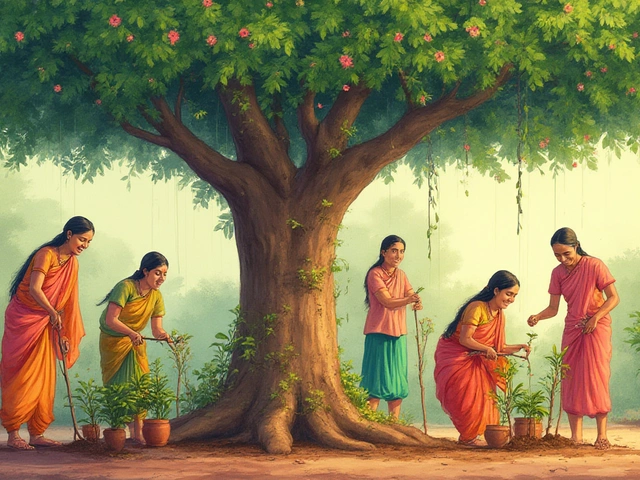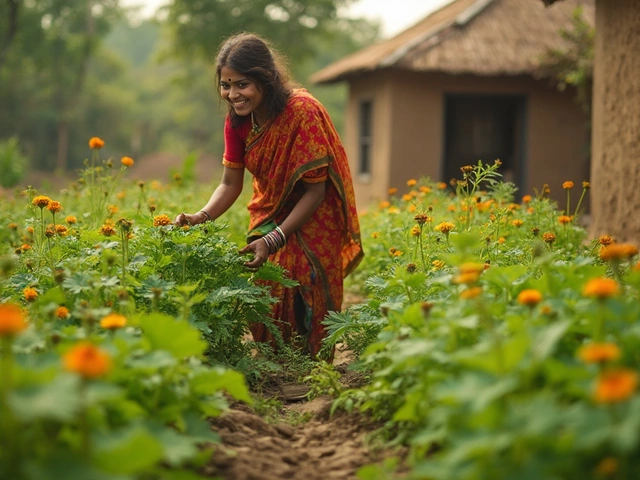Imagine plucking a vegetable fresh off the vine, knowing it holds stories and traditions unique to its land. The Bottle Gourd, some call it Lauki, echoes this sentiment perfectly. Originating and thriving across India, this remarkable plant intertwines itself deeply with the daily lives and kitchens of the subcontinent.
Not only does it shine in its simplicity to cultivate, but it also boasts an assortment of nutritional benefits that have nourished generations. Filled with water, this calming vegetable stands resilient under the Indian sun, embracing environments that range from cottage gardens to sprawling farms.
Within these paragraphs, unravel what makes the Bottle Gourd a true treasure of Indian gardening. Discover tips and ideals to nurture this plant at home, as well as its cherished place in colorful Indian dishes. Join this journey through soils rich in heritage, and perhaps sow the seeds of one of India's best-kept secrets in your own garden.
- The Unique Traits of Bottle Gourd
- Growing Conditions and Techniques
- Cultural Significance in Indian Cuisine
- Tips for Home Garden Enthusiasts
The Unique Traits of Bottle Gourd
The Bottle Gourd, commonly referred to as Lauki, is not just an ordinary vegetable; it's a marvel that has captured the hearts of many gardening enthusiasts, especially in India. This gourd, with its smooth skin and light green hue, lends an aesthetic charm to any garden space. Its adaptability to India's varied climate is nothing short of remarkable. The plant thrives in both humid and dry conditions, making it a resilient choice for both beginner and experienced gardeners. Its growth pattern is quite vigorous; the plant typically climbs and sprawls, creating a lush, green oasis that adds a touch of nature's beauty right in your backyard.
Speaking of its biological design, the Bottle Gourd is an annual vine, producing lush foliage and charming white flowers that eventually give way to the distinctive, bottle-shaped fruit. This very shape is an evolutionary adaptation that allows the gourd to maintain its water content even in the sweltering heat. The interior of the gourd is composed primarily of water, making it an ideal summer vegetable due to its cooling effects. Historically, it has been cherished not only for consumption but also for its utility in crafting containers and musical instruments—a testament to its versatile nature.
From a botanical perspective, the Bottle Gourd originates from the Cucurbitaceae family, like pumpkins and cucumbers. Its cultivation goes back thousands of years, believed to have originated from Africa and spread to India where it became a staple. The simplicity of its growth and maintenance is a significant reason for its widespread cultivation. Sow its seeds directly into the soil, and a healthy establishment will follow if the basic care conditions are met, such as ample sunlight and moderate watering. Once the plant starts bearing fruit, be prepared for a consistent harvest; with proper care, a single plant can yield a substantial number of gourds throughout the growing season.
Interestingly, the fruit's nutritional profile is quite impressive. Low in calories yet high in fiber, the Bottle Gourd is an ideal addition to healthy diets. It is packed with significant nutrients, notably vitamins C and B, along with minerals such as calcium and magnesium, which support overall health. Ayurveda, the ancient Indian system of medicine, often highlights the importance of this vegetable, citing its benefits in digestion and hydration.
In the words of renowned botanist Dr. Rajiv Sharma, this humble gourd is "a hidden gem in the world of natural nutrition."
"In many ways, the Bottle Gourd is a testament to how nature provides for us—an amalgamation of nutritional goodness wrapped in a simple, green package," says Dr. Sharma, a leading figure in sustainable gardening practices.
On the cultural front, the Bottle Gourd holds a special place in Indian homes. It's a frequent component in traditional dishes that vary from comforting stews to rich curries. Not only is its flesh embodied into meals, but clever home cooks often use the plant's tender leaves and shoots as well, minimizing waste and maximizing taste. Culinarily versatile, its mild flavor readily absorbs spices and enhances the taste of myriad dishes, making it a beloved ingredient across various Indian cuisines. Truly, the Bottle Gourd is a vegetable that embodies resilience, utility, and nourishment, serving as an essential piece of India's gardening and culinary tapestry.
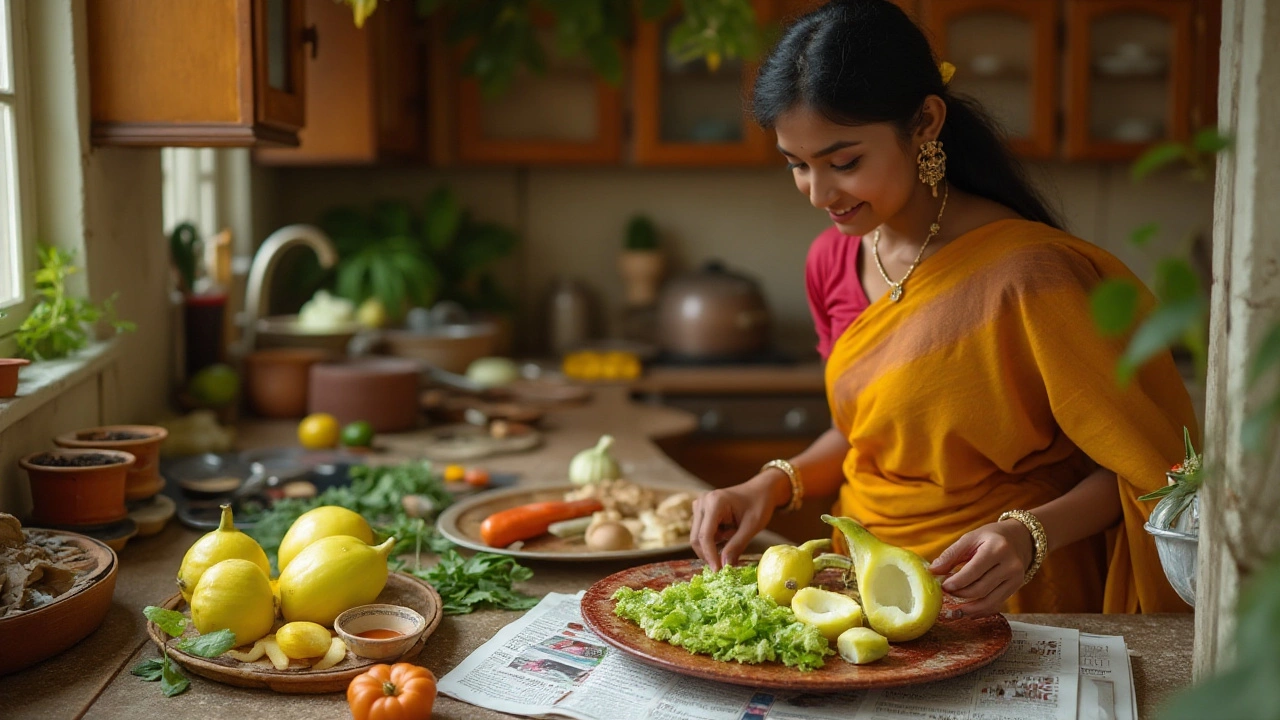
Growing Conditions and Techniques
Growing Bottle Gourd in your home garden, especially in the diverse and vibrant climates of India, can be an enriching experience both for the novice and the seasoned gardener. Its adaptability to different climatic conditions is part of what makes it so intriguing. This vigorous climber does well in warm, tropical weather, enjoying plenty of sunshine while basking in its humid glory. If you are considering planting this unique Indian vegetable, starting with the right seeds is crucial. Once your seedlings are ready, usually after the monsoon showers have kissed the soil, you can feel the earthy pulse of vitality as they begin to climb.
The ideal growing conditions warrant well-draining, sandy loam soil, enriched with organic matter, ensuring your Bottle Gourd thrives best. Compost or well-rotted manure is an excellent addition to the soil, creating a nurturing bed that supports active root growth. Watering is key, especially ensuring consistency without waterlogging, as these gourds have a deep-root system needing frequent but balanced moisture. A trellis or support system is vital too. By letting the vines stretch upwards, you encourage better airflow, reduce pest issues, and keep the fruits cleaner. Harvesting requires patience, waiting until the gourds reach their mature yet tender state, typically 100 days post-germination.
While you care for these climbing beauties, take heed of the pests, like the red pumpkin beetle or aphids, that could attempt to make your vegetable their abode. Traditional methods like neem oil sprays can help control such fluctuations, keeping your gourds safe. As the sun bathes your garden, the indulgence of nurturing this resilient vegetable could transform not just your garden but also your culinary experiences with each new yield.
"The hands that sow, reap, and nurture the Bottle Gourd, cultivate traditions that enrich both soil and soul." - Ancient Indian Proverb
Your journey with this vegetable does not end at the harvest. As the seasons change, saving seeds from the best fruits ensures continuity and lets you become a custodian of an age-old Indian tradition. Remember, the subtle art of growing Bottle Gourd is much like weaving music, each step is a note, and the resulting melody is a testament to your dedication.
For the curious gardener aiming to incorporate statistics into pleasure, here's a table highlighting the average conditions for optimal growth:
| Parameter | Optimal Condition |
|---|---|
| Soil pH | 6.5 - 7.5 |
| Temperature | 20°C to 30°C |
| Watering Frequency | Once a week |
| Sunlight | Full sun (6-8 hours a day) |
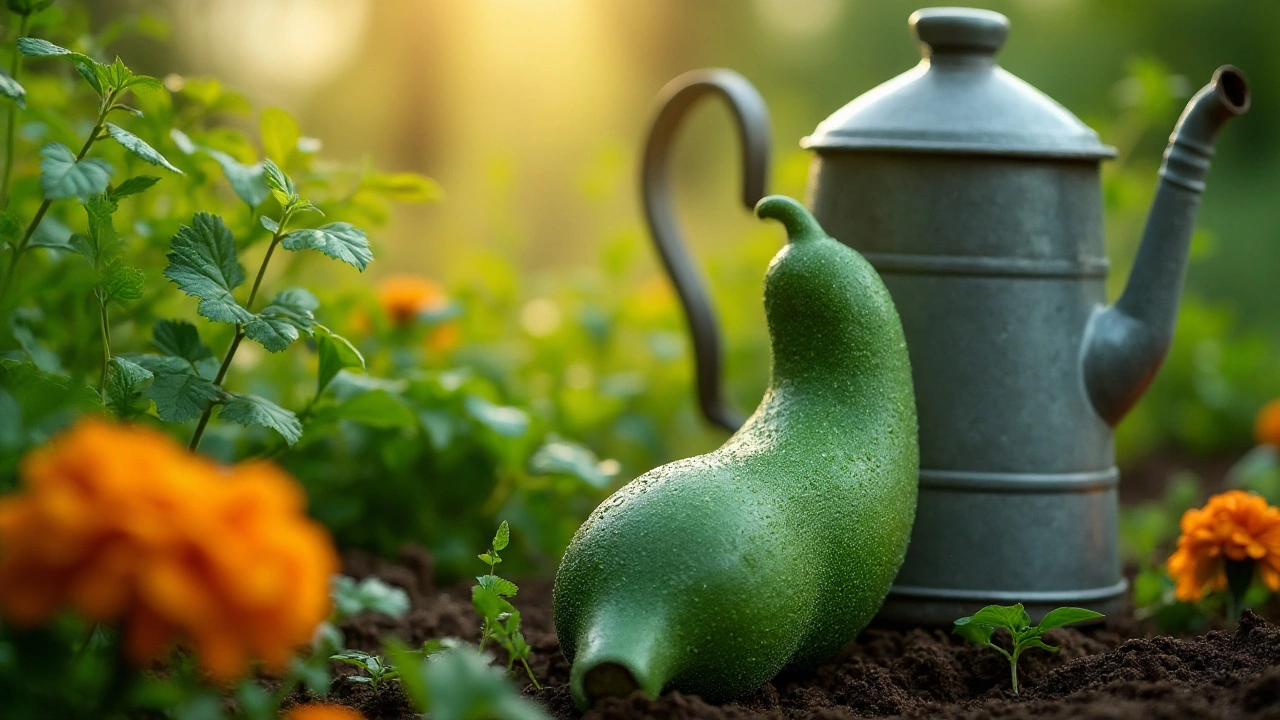
Cultural Significance in Indian Cuisine
In the vibrant tapestry of Indian cuisine, the Bottle Gourd holds a place of both tradition and innovation. Known locally as Lauki or Dudhi, this humble vegetable becomes the hero in innumerable dishes across the country, showcasing its versatility and pleasant, slightly sweet taste. From the bustling streets of Mumbai to the tranquil villages of Kerala, Bottle Gourd is beloved by chefs and home cooks alike, praised not only for its flavor but also for its health benefits. It is often seen in homes, where it graces the family dinner table as a means to balance rich and spicy meals with its soothing, mild presence.
One of the standout features of this vegetable is its high-water content, making it a perfect ingredient for hot climates. It's common to find Lauki making an appearance in comforting curries and stews. The sambar, a staple in South Indian meals, often includes chunks of soft Lauki simmered along with lentils and a blend of spices. The people of Rajasthan enjoy it as a key ingredient in their robust Rajasthani Kadhi. Indeed, this vegetable is a celebrated thread woven through the fabric of both everyday meals and festive feasts.
Moreover, the Bottle Gourd’s nutrient-rich profile adds a layer of reverence to its status in Indian culture. With minerals, vitamins, and properties hailed by Ayurveda for cooling and detoxifying, it's not surprising that it is frequently recommended by traditional health practitioners. A popular Rajasthan proverb captures its significance: "Lauki ke daam pe Dawai," suggesting that this vegetable is as valuable as medicine itself.
"Eating fresh vegetables like Bottle Gourd can help one deal with stress and improve overall health," says nutrition expert Dr. Ranjan Singh.
Let us not forget the delectable sweets made with this versatile vegetable! The delightful Lauki halwa is a testament to its ability to morph into a dessert worthy of celebration, enriched and perfumed with spices like cardamom and safron. For culinary innovators, Bottle Gourd serves as a canvas, offering a mild taste profile that allows for experimentation with diverse flavors, drawing on India's regional culinary diversity to inspire new twists on age-old favorites.
Ultimately, the strong place of the Bottle Gourd in the spectrum of Indian cuisine is undeniable. With its ability to blend effortlessly against spices or stand out when prepared with minimal ingredients, it embodies both simplicity and depth. Whether crafted into a rustic stew or transformed into a decadent dessert, this vegetable continues to remind us that some of the greatest culinary delights come from respecting age-old traditions and savoring the fresh bounty of the earth.
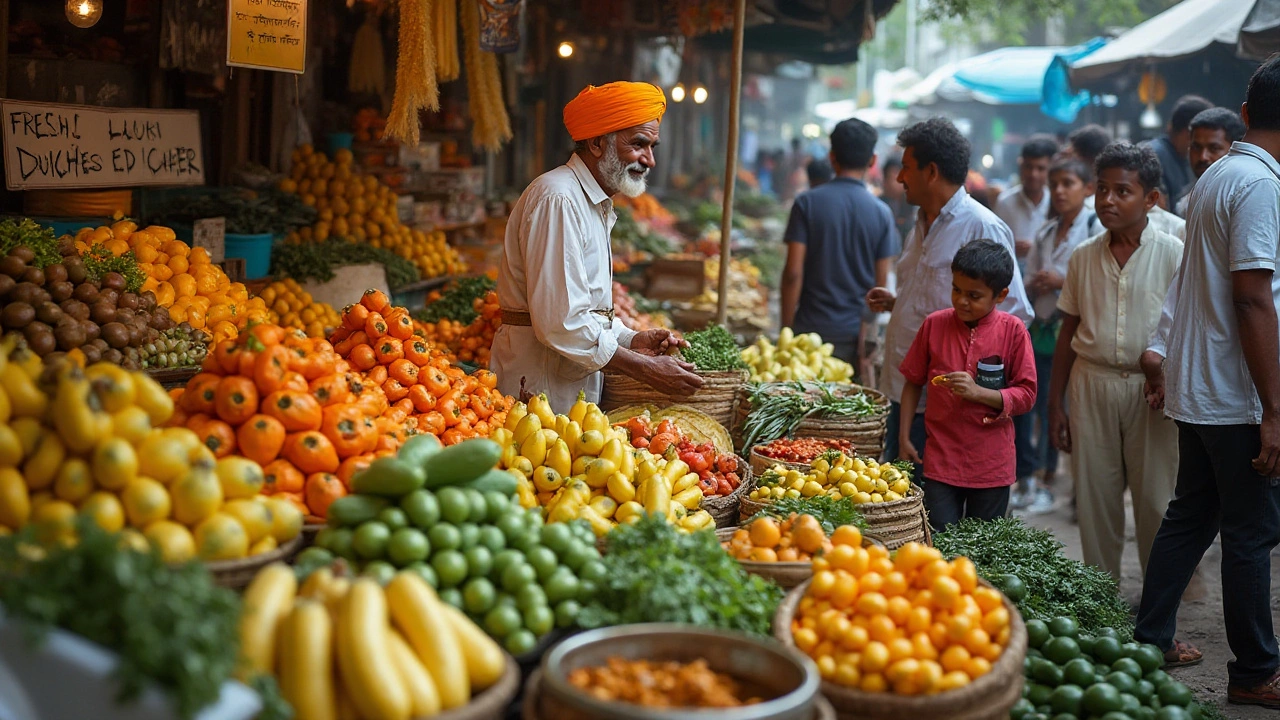
Tips for Home Garden Enthusiasts
Gardening at home can be a rewarding and fulfilling experience, especially when it involves cultivating a unique plant such as the Bottle Gourd. For those in India or even those managing to recreate favorable conditions elsewhere, knowing the right techniques can make a huge difference. First and foremost, understanding the climate in which Bottle Gourds thrive best—warm with ample sunlight—is crucial. Typically, these plants adore temperatures between 20 to 30 degrees Celsius. Plant them after all chances of frost have disappeared, choosing a sunny spot in your garden.
Soil preparation is another vital aspect. The Bottle Gourd demands well-drained, nutrient-rich soil, which means you need to ensure it is loose and fertile. Incorporating compost or well-rotted manure into your soil increases organic matter, greatly aiding growth. Once your soil is ready, sow the seeds directly into the garden. Keep a seed spacing of about 18 to 24 inches, ensuring that they have ample room to spread their vines. Regular watering is essential, particularly in their early stages of growth. However, pay attention to soil moisture levels—overwatering can lead to root rot.
Training and support for your Bottle Gourd plants are as necessary as any other element in this growing process. A simple trellis or strong vertical support ensures your vines have the ability to climb and spread without getting damaged. This not only promotes better health but also maximizes space efficiency in smaller garden areas. While the plant finds its way up, regular pruning and the removal of side shoots can promote better air circulation and encourage stronger growth from the main stem.
Furthermore, pests and diseases should never be overlooked, even though the Bottle Gourd is generally resilient. Keep an eye out for common enemies like aphids and mildew. Implementing natural remedies such as neem oil can fend off many of these pests. On occasion, a balanced liquid fertilizer may also be used to support fruiting, especially if you notice the fruit getting smaller.
Another fascinating tidbit: a study estimated you could yield around 15 to 20 gourds per plant annually, given proper care and attention. This can weigh anywhere from 1 to 2 kilograms each!
"Growing Bottle Gourds is not only sustainable but also allows the gardener to be a part of history, nurturing a plant with continued cultural significance." - Journal of Indian Botany.By following these tips, home gardeners can expect a bountiful harvest that enriches not only their garden but also their kitchen with a multitude of delicious dishes.
